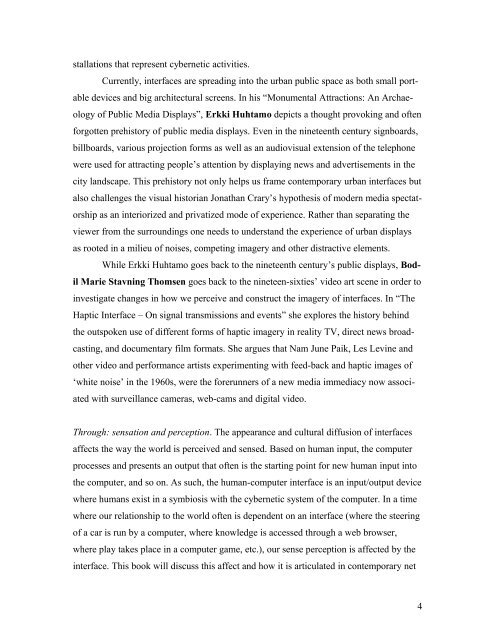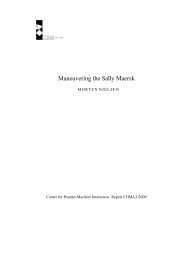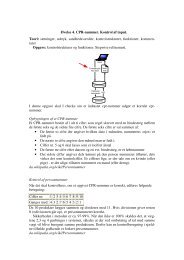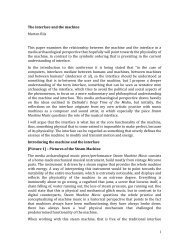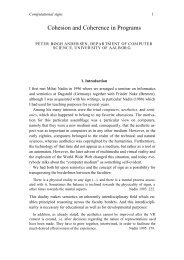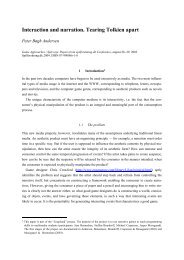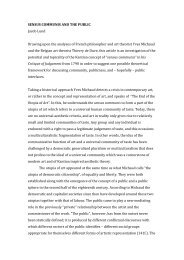introductory chapter - Digital Aesthetics Research Center
introductory chapter - Digital Aesthetics Research Center
introductory chapter - Digital Aesthetics Research Center
You also want an ePaper? Increase the reach of your titles
YUMPU automatically turns print PDFs into web optimized ePapers that Google loves.
stallations that represent cybernetic activities.Currently, interfaces are spreading into the urban public space as both small portabledevices and big architectural screens. In his “Monumental Attractions: An Archaeologyof Public Media Displays”, Erkki Huhtamo depicts a thought provoking and oftenforgotten prehistory of public media displays. Even in the nineteenth century signboards,billboards, various projection forms as well as an audiovisual extension of the telephonewere used for attracting people’s attention by displaying news and advertisements in thecity landscape. This prehistory not only helps us frame contemporary urban interfaces butalso challenges the visual historian Jonathan Crary’s hypothesis of modern media spectatorshipas an interiorized and privatized mode of experience. Rather than separating theviewer from the surroundings one needs to understand the experience of urban displaysas rooted in a milieu of noises, competing imagery and other distractive elements.While Erkki Huhtamo goes back to the nineteenth century’s public displays, BodilMarie Stavning Thomsen goes back to the nineteen-sixties’ video art scene in order toinvestigate changes in how we perceive and construct the imagery of interfaces. In “TheHaptic Interface – On signal transmissions and events” she explores the history behindthe outspoken use of different forms of haptic imagery in reality TV, direct news broadcasting,and documentary film formats. She argues that Nam June Paik, Les Levine andother video and performance artists experimenting with feed-back and haptic images of‘white noise’ in the 1960s, were the forerunners of a new media immediacy now associatedwith surveillance cameras, web-cams and digital video.Through: sensation and perception. The appearance and cultural diffusion of interfacesaffects the way the world is perceived and sensed. Based on human input, the computerprocesses and presents an output that often is the starting point for new human input intothe computer, and so on. As such, the human-computer interface is an input/output devicewhere humans exist in a symbiosis with the cybernetic system of the computer. In a timewhere our relationship to the world often is dependent on an interface (where the steeringof a car is run by a computer, where knowledge is accessed through a web browser,where play takes place in a computer game, etc.), our sense perception is affected by theinterface. This book will discuss this affect and how it is articulated in contemporary net4


